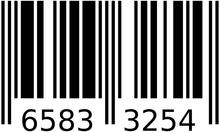Automated Identification Technologies for Forensic Science
Forensic science laboratories and law enforcement agencies have increasingly used automated identification technology (AIT), such as barcoding and radio frequency identification (RFID), to track and manage forensic evidence, firearms, and personnel. AIT enables the capture, collection, and transfer of data to automatically identify objects and enter data about them directly into computer systems with little to no human involvement.
Barcodes
A barcode is an optical machine-readable representation of data about an object. One of the most commonly used forms of barcode is the Universal Product Code (UPC).
| Type | Description | Example |
|---|---|---|
| Linear Barcodes | Linear barcodes are composed of bars and spaces all in a single line. Linear barcodes cannot store much data. They can typically store nine data characters for every inch of horizontal barcode space. |

|
| 2D Barcodes | 2D barcodes consist of black and white "cells" or modules arranged in either a square or a rectangle. Unlike linear barcodes, 2D barcodes can store up to 2 kilobytes of data. |

|
Radio Frequency Identification (RFID)
RFID is an established AIT that uses radio waves to perform automatic data acquisition. There are three types of RFID.
| Type | Description |
|---|---|
| Active RFID | An active RFID is an RFID tag that is equipped with a battery that can be used as a partial or complete source of power for the tag's circuitry and antenna. |
| Passive RFID | A passive RFID is an RFID tag that does not contain a battery; the power is supplied by the reader. When radio waves from the reader are encountered by a passive RFID tag, the antenna within the tag generates current from the field. The tag draws power from it, energizing the circuits in the tag. |
| Battery Assisted Passive (BAP) | BAP RFID tags, or semi-active RFID tags, are a third class of tags that are a hybrid of both passive and active tags. It contains an integrated power source that can gather energy from the battery, instead of the reader, to wake up the chip. |
RFID in Forensic Evidence Management: An Assessment of Barriers, Benefits, and Costs
During deliberations of the NIST/NIJ Technical Working Group on Biological Evidence Preservation, members identified the need for information on the use of automated identification technology in evidence management. As a result, NIST commissioned a small study to gain a better understanding of the capabilities of advanced technologies to improve tracking and preservation of evidence. RFID Technology in Forensic Evidence Management: An Assessment of Barriers, Benefits and Costs, published in November 2014, summarizes the study and includes recommendations to law enforcement agencies responsible for the management and tracking of forensic evidence.

